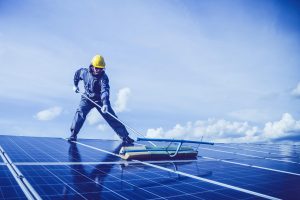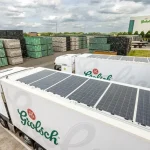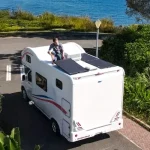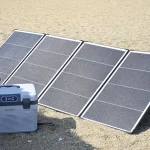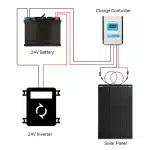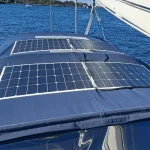1. Why Cleaning Solar Panels Matters
Dust, bird droppings, pollen, and leaves can block sunlight from reaching your solar panels. Even a thin layer of dirt can reduce how much energy they produce.
Key Facts:
- In dusty areas, dirty solar panels can lose 20–30% of their yearly energy output(based on studies in regions with heavy air pollution).
- Regular cleaning helps panels work at full capacity, saving you money and maximizing your investment.
2. When to Clean Your Solar Panels
Signs It’s Time to Clean:
- You see visible dirt, bird droppings, or leaves stuck on the panels.
- Your energy bills go up unexpectedly (check your system’s monitoring app for drops in production).
- After storms, wildfires, or dusty weather.
How Often to Clean:
- Most homes: Clean 1–2 times a year.
- Dusty or dry climates: Clean 3–4 times a year.
- After extreme weather: Clean as needed (e.g., post-sandstorm or heavy snowfall).
3. Safe and Simple Cleaning Methods
- Do-It-Yourself Cleaning (From the Ground)
What You’ll Need:
- Garden hose with a gentle spray nozzle
- Soft-bristle brush (like a car wash brush) attached to a long pole
- Bucket of water mixed with mild dish soap (avoid harsh chemicals)
- Squeegee with a soft rubber blade (optional)
Steps:
- Turn off your solar system(follow the manufacturer’s instructions).
- Rinse panels with water to loosen dirt.
- Gently scrub with soapy water using the brush.
- Rinse again to remove soap.
- Dry with a squeegee or let the panels air-dry.
Safety Tips:
- Clean in the early morning or evening to avoid spraying cold water on hot panels (this can crack the glass).
- Stay on the ground—never climb onto the roof.
- Avoid high-pressure hoses or rough scrubbing.
- Wear rubber-soled shoes and gloves to prevent slips and electric shocks (even when panels are off, residual energy may exist).
- Check weather forecasts — Never clean during rain, lightning, or high winds to avoid electrocution or falls.
- Use a stable ladder with a spotter if accessing elevated panels, and avoid leaning directly on panels to prevent structural damage.
- Hiring a Professional
Consider professional help if:
- Panels are hard to reach (e.g., steep roofs).
- You’re uncomfortable cleaning them yourself.
- Stains won’t come off (e.g., tree sap or heavy pollution).
Average Cost: 100–300 per cleaning (varies by location).
- Advanced Options
- Automatic cleaners: Systems like sprinklers or robotic brushes (good for large setups).
- Special coatings: Some companies apply protective layers to repel dust (ask your installer for details).
4. Benefits of Regular Cleaning
- Save money: Clean panels can produce up to 30% more energy in dusty areas.
- Protect your investment: Prevent long-term damage from acidic bird droppings or debris.
- Eco-friendly: Maximize clean energy and reduce reliance on the grid.
5. Solar Panel Cleaning FAQs
Q1: Does rain clean solar panels?
A: Rain washes off light dust, but sticky dirt (like bird droppings) often stays. Clean panels manually 1–2 times a year for best results.
Q2: What’s safe to use for cleaning?
A: Mild dish soap (e.g., Dawn) mixed with water. Avoid bleach, ammonia, or abrasive cleaners.
Q3: How do I remove snow from panels?
A: Use a soft broom or roof rake to gently push snow off. Never use hot water—it can crack the glass.
Q4: Can I use glass cleaner like Windex?
A: No! These leave streaks and residues that block sunlight. Stick to soap and water.
Q5: Will cleaning damage my panels?
A: Not if you follow these tips. Avoid rough tools, high-pressure hoses, or walking on the panels.
Q6: Do I need to clean if I live in a rainy area?
A: Rain helps, but check panels yearly. Pollen or moss might build up over time.
Final Tips
- Monitor energy output monthly to detect efficiency drops.
- Trim nearby trees to reduce leaves and bird droppings.
- Ask your installer about maintenance plans or protective coatings.
By keeping your solar panels clean, you’ll enjoy more energy savings and help the planet—no complicated tools or jargon required!


